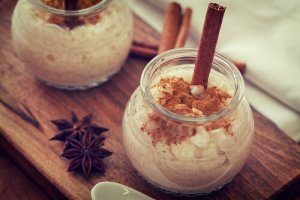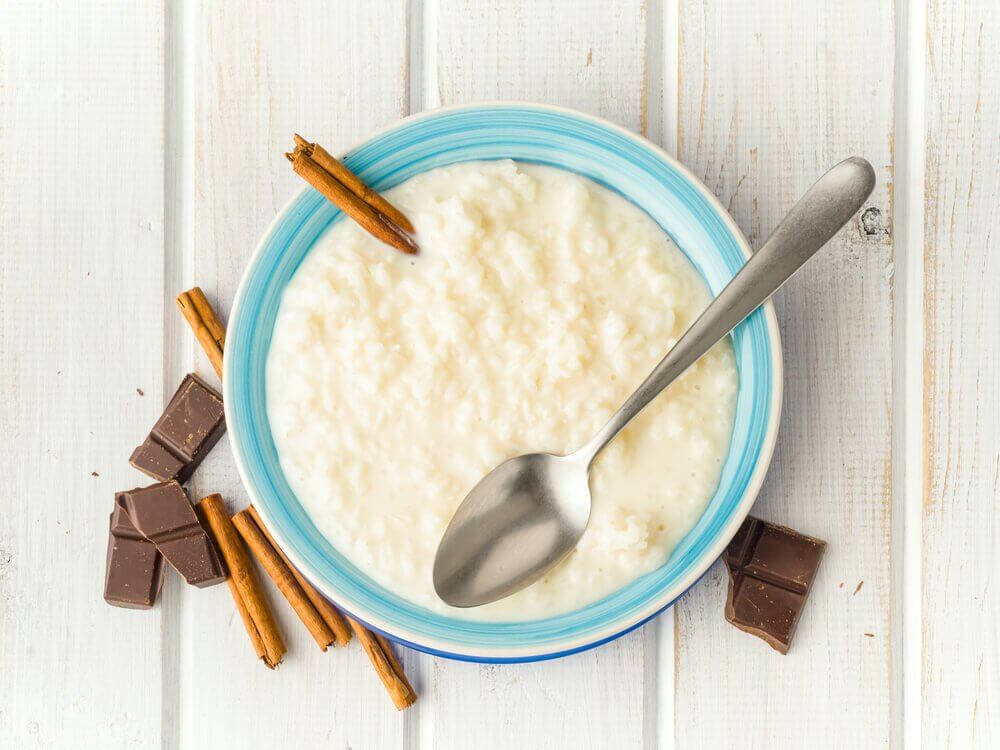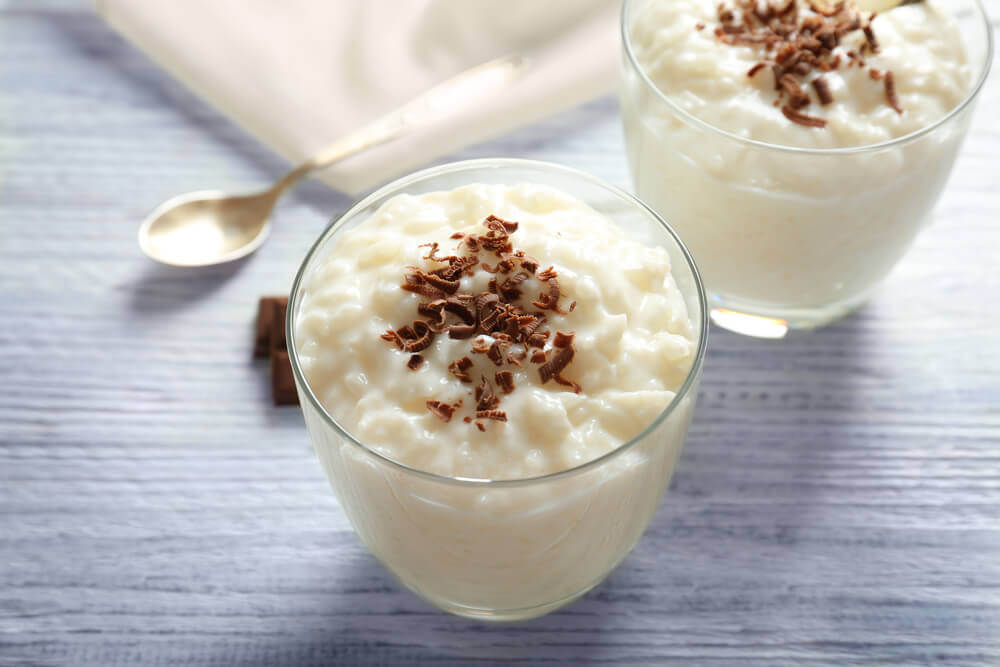How to make a low-calorie rice pudding


Written and verified by the nutritionist Eliana Delgado Villanueva
Would you like to learn how to prepare a low-calorie rice pudding? Even though you might be used to making the traditional recipe that contains sugar and whole milk, you can use other ingredients with lower calorie content.
Of course, this doesn’t mean you can eat large amounts of dessert. To maintain the concept of a healthy diet, you should eat moderate portions and eat it only occasionally. Enjoy it after your main meals or as a snack.
Low-calorie rice pudding
The ingredients called for in this low-calorie rice pudding all have a high nutritional value. To begin with, enriched white rice can provide thiamine, niacin, iron and folic acid, according to a study published in the Journal of the American Dietetic Association.
Likewise, we advise that you to use low-fat milk because it’s lower in calories and still has most of the nutritional quality of dairy products. These, according to a publication in Food & Nutrition Research, can protect you against many diseases.
Among other things, you can use other ingredients such as citrus zest, cinnamon, and the sweetener of your choice to obtain a more pleasant taste. Again, remember that the key to enjoying this treat without regrets is to eat it in moderate portions.
Ingredients
- 1 c. of white rice (170 g)
- 4 c. of low-fat milk (1 pint)
- A grated orange peel (from one orange)
- A grated lemon peel (from one lemon)
- A natural sweetener
- 1 cinnamon stick, or cinnamon powder
Recommended recipe: A Pear Pie Is A Healthy Dessert for Your Diet
How to make low-calorie rice pudding

- First, rinse the rice and strain it. Then, boil in water.
- Afterward, add the cinnamon, grated peels, and sweetener.
- Let boil until the water is completely absorbed. Don’t forget to stir the rice so it doesn’t stick to the bottom.
- Once it’s creamy and as soon as all of the water evaporates, add the low-fat milk. Now, just let the rice cook in the milk.
- When it starts boiling, remove it from heat. Then, cover it and let sit for a while. If you like cold rice pudding, let it cool down a few hours before you store it in the fridge.
With this recipe, a portion of your dessert will be around 83 kcal and will have little fat content. This is because cinnamon, orange peel, and lemons have zero calories.
Learn more: Which Kind of Rice is Best for Your Figure?
Other options for low-fat rice pudding
There’s another version of the rice pudding recipe you can make if you’re lactose intolerant intolerance or have allergies. It’s also great if you’re vegan or vegetarian. Just use vegan milk instead of dairy.
Also, those who are lactose intolerant can use lactose-free milk. Your choice will depend on your taste. The most important part is you can enjoy a healthy dessert without worrying about gaining weight.
Ingredients
- 1/2 c. of brown rice (85 g)
- 3 c. of oat milk (750 ml)
- 2 tbsp of stevia (30 ml)
- 1 lemon peel
- 1 cinnamon stick
- Powdered cinnamon
Instructions

- Begin by boiling the brown rice in less water than you would for white rice. In this case, you don’t need to use large amounts of water. Once it’s cooked, cool it with cold running water.
- Next, bring the oat milk to a boil together with the cinnamon stick and the lemon peel. Once it starts to boil, introduce the rice into the milk.
- Let boil for 30 minutes, constantly stirring so it won’t stick to the bottom.
- Finally, remove from heat and chill. To serve, sprinkle cinnamon on top.
As we said above, you can use any type of milk you want. There are all sorts of them in the market be it low-fat, lactose-free, or vegans such as soy and almond.
If you notice any type of digestive problem when you drink dairy, then, without a doubt, your best choice will be vegan milk. They’re very healthy and equally rich. Are you ready to try this recipe?
All cited sources were thoroughly reviewed by our team to ensure their quality, reliability, currency, and validity. The bibliography of this article was considered reliable and of academic or scientific accuracy.
- Thorning TK, Raben A, Tholstrup T, Soedamah-Muthu SS, Givens I, Astrup A. Milk and dairy products: good or bad for human health? An assessment of the totality of scientific evidence. Food Nutr Res. 2016;60:32527. Published 2016 Nov 22. doi:10.3402/fnr.v60.32527
- Leon Guerrero, R. T., Gebhardt, S. E., Holden, J., Kretsch, M. J., Todd, K., Novotny, R., & Murphy, S. P. (2009). White Rice Sold in Hawaii, Guam, and Saipan Often Lacks Nutrient Enrichment. Journal of the American Dietetic Association, 109(10), 1738–1743. https://doi.org/10.1016/j.jada.2009.07.008
- Gaucheron, F. (2005). The minerals of milk. Reproduction Nutrition Development. https://doi.org/10.1051/rnd:2005030
- Steinmetz, K. A., Childs, M. T., Stimson, C., Kushi, L. H., McGovern, P. G., Potter, J. D., & Yamanaka, W. K. (1994). Effect of consumption of whole milk and skim milk on blood lipid profiles in healthy men. American Journal of Clinical Nutrition. https://doi.org/10.1093/ajcn/59.3.612
- Arrowsmith, S., Kendrick, A., & Wray, S. (2010). Drugs acting on the pregnant uterus. Obstetrics, Gynaecology and Reproductive Medicine. https://doi.org/10.1016/j.ogrm.2010.05.001
This text is provided for informational purposes only and does not replace consultation with a professional. If in doubt, consult your specialist.








